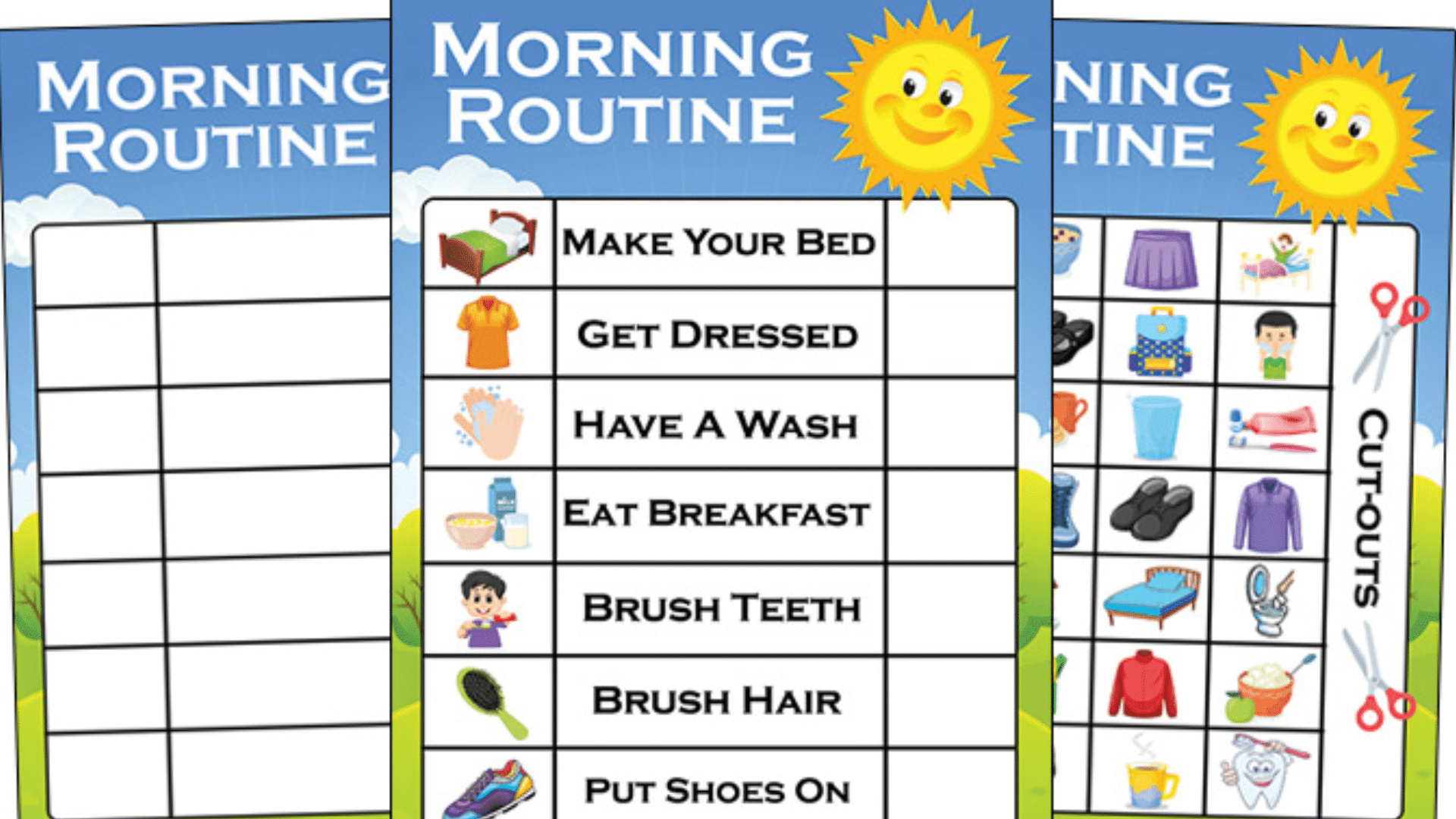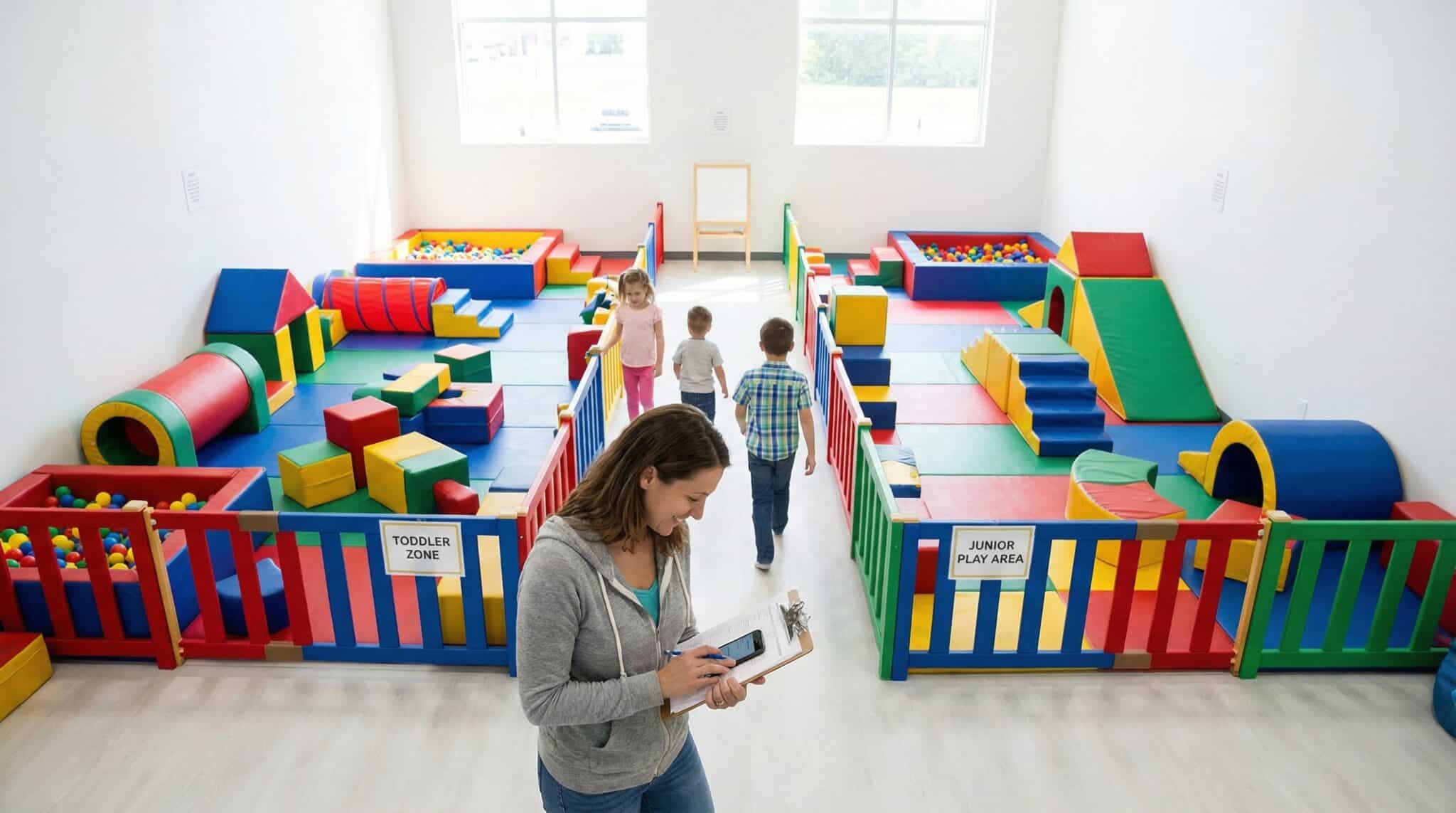Are your mornings with your kids a constant rush? A kids’ morning routine chart could be the answer you’re looking for.
It helps your child take ownership of their day, teaches responsibility, and reduces stress for both of you.
If you’re considering a printable, magnetic, or dry-erase chart, in this guide, I’ll walk you through all the options to help you choose the best one for your child.
In this blog, you’ll find out how to use a routine chart, where to buy it, and avoid common mistakes. Ready to make mornings easier? Let’s get started!
Why Kids’ Morning Routine Charts are Essential
Kids’ morning routine charts are vital for promoting independence, as they help children manage their own time and tasks.
These charts reduce morning stress by creating a clear structure, ensuring a smooth start to the day.
Additionally, they foster responsibility by encouraging children to complete tasks on their own, allowing them to feel accomplished and self-sufficient.
Incorporating a routine chart not only sets a positive tone for the day but also contributes to a child’s overall growth and confidence.
Types of Kids’ Morning Routine Charts
Let me share different types of kids’ morning routine charts, including printable, magnetic, dry-erase, and digital options, each with unique benefits.
1. Printable Charts


Printable charts are an affordable and customizable option for parents. These charts can be downloaded from various websites and personalized to suit a child’s needs.
You can easily add pictures, stickers, and text to make it visually appealing. However, since these charts are static and lack interactive features, kids may not stay engaged with them over time.
They are best for those looking for a quick and cost-effective solution, but may not hold a child’s attention as well as other options.
2. Magnetic Charts


Magnetic charts are a highly engaging and reusable option. With magnetic pieces for each task, children can physically move pieces around as they complete their morning chores.
This interactive approach helps keep kids excited about following their routine and is great for visual learners.
While magnetic charts are durable and provide a fun, hands-on experience, they tend to be more expensive than printable charts.
They also require enough wall or board space to be placed effectively, which could be a limitation in smaller rooms.
3. Dry-Erase Charts
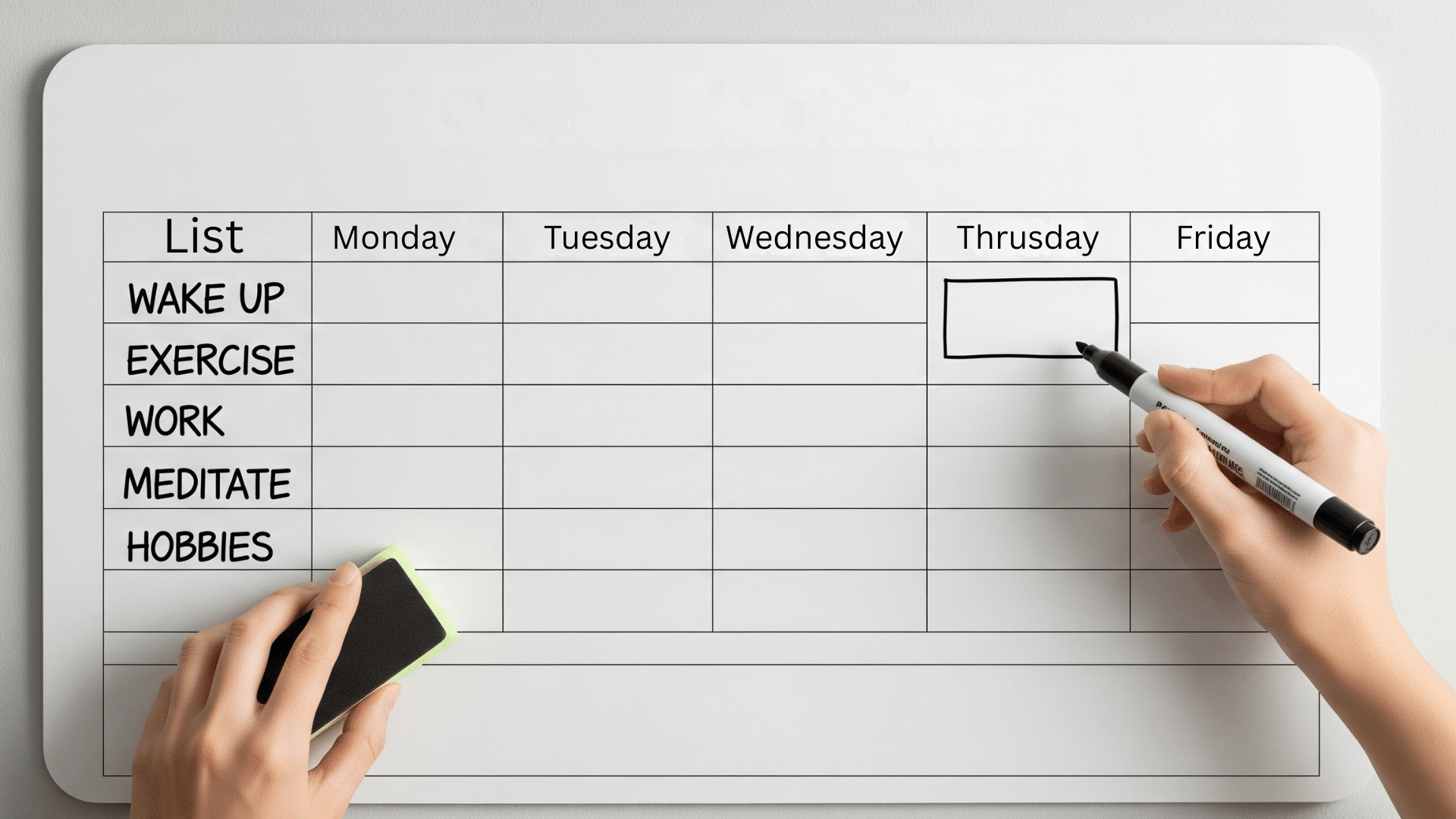

Dry-erase charts offer flexibility, allowing parents to modify the routine as needed. You can easily update tasks or add new ones without needing to print a new chart.
This format is reusable, making it a cost-effective option in the long run.
Dry-erase charts are highly customizable and can be cleaned and reused daily. However, they require regular cleaning to maintain clarity, and some children may find the need for a marker and eraser a bit cumbersome.
It’s important to ensure the markers used are non-toxic and easy to wipe clean.
4. Digital Alternatives
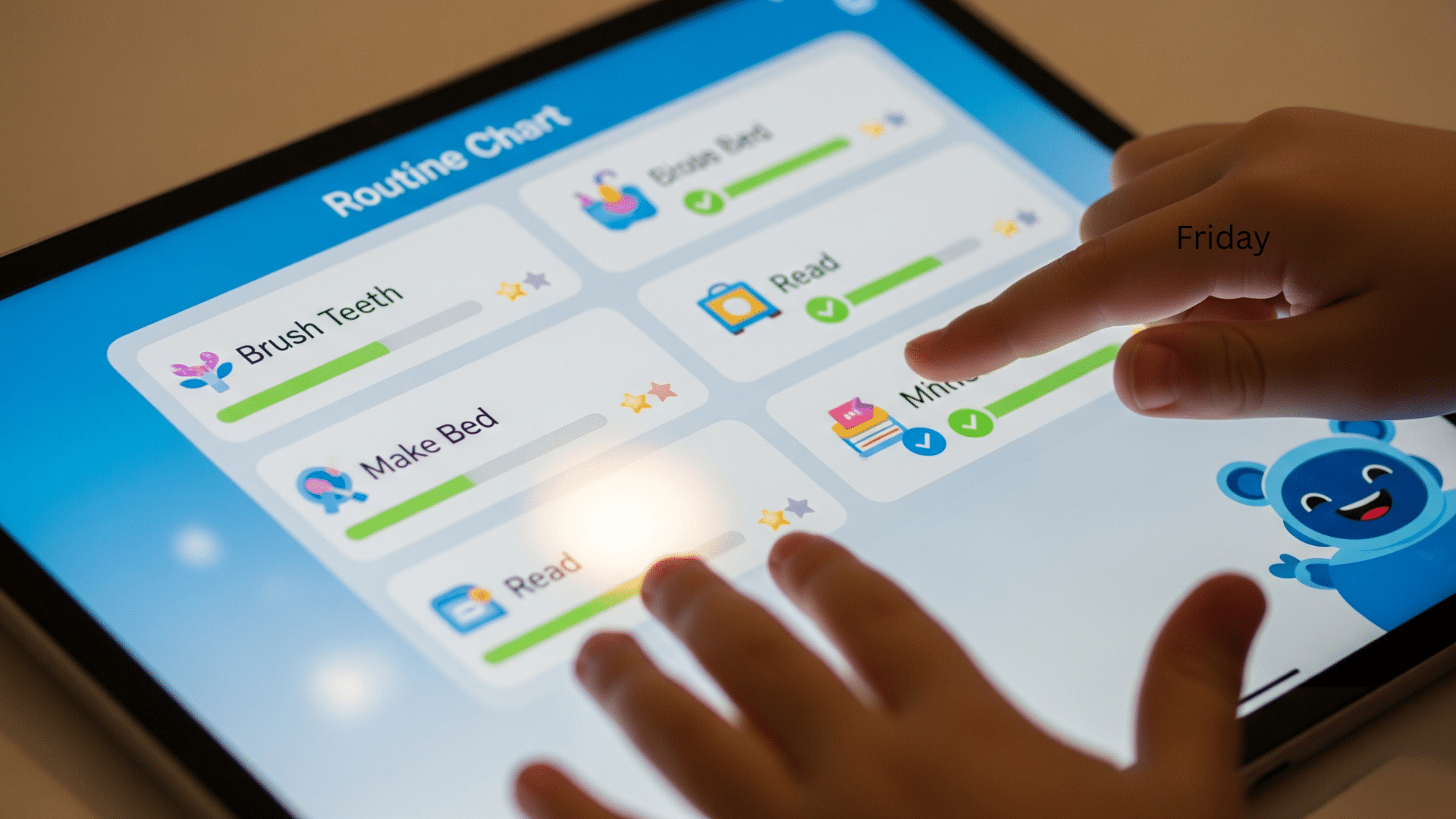

For tech-savvy families, digital alternatives like apps or online charts can offer an innovative solution. These apps can be accessed on smartphones or tablets, providing reminders and tracking progress in real-time.
Digital charts may include features like rewards, gamified tasks, and progress tracking, which can be highly motivating for kids. However, they may not be as tangible or engaging for younger children compared to physical charts.
Additionally, screen time concerns may deter some parents from opting for digital solutions. Digital charts offer great flexibility and are ideal for families looking for a high-tech approach.
5. Fun and Engaging Morning Routine Chart for Kids
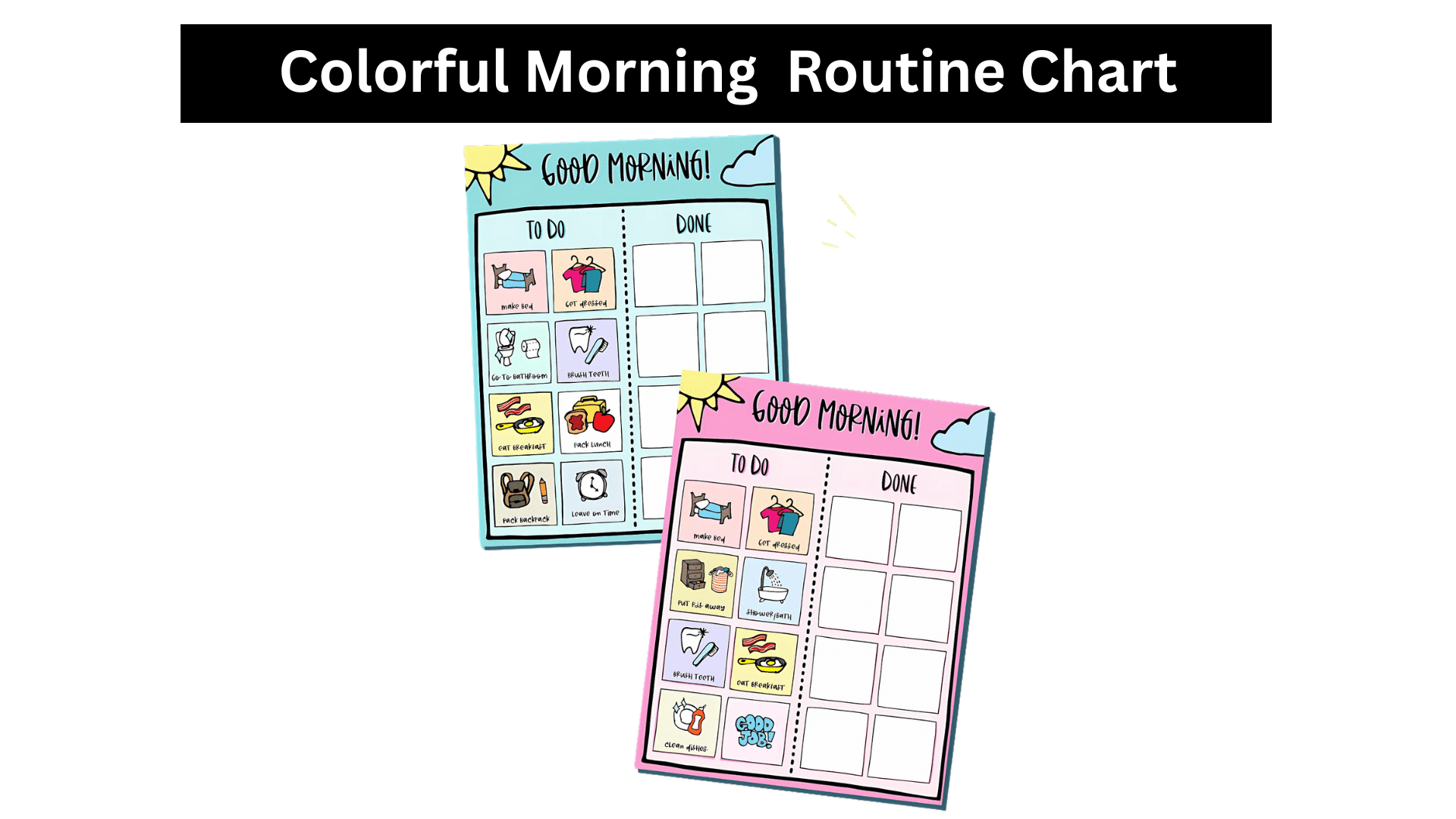

This colorful and fun morning routine chart is designed to help kids stay on track and manage their day. With clear tasks like making the bed, brushing teeth, and eating breakfast, the chart uses easy-to-understand icons.
The “To Do” and “Done” sections allow kids to visually track their progress, making mornings easier and more engaging. Get your child excited about their daily routine.
6. Weekly Morning Routine Checklist for Kids
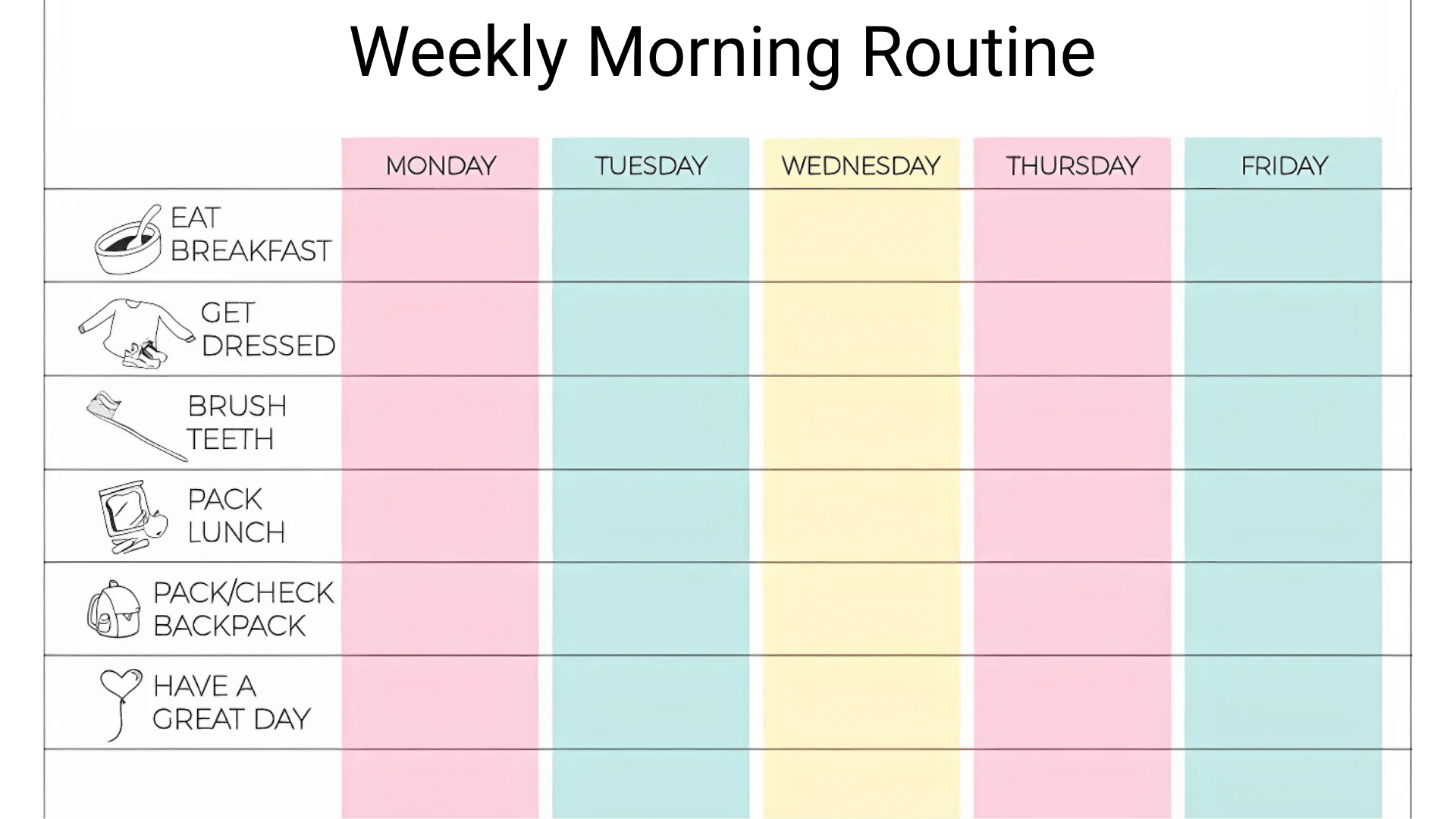

This morning routine checklist is a colorful, weekly planner that helps kids stay organized each day. It includes key tasks like eating breakfast, getting dressed, brushing teeth, and packing a lunch, broken down by days of the week.
The simple design and easy-to-read layout make it perfect for kids to follow, helping them stay on track and feel accomplished each morning. Download this checklist to keep mornings stress-free.
How to Choose the Right Morning Routine Chart for Your Child
Select a morning routine chart based on your child’s age, customization preferences, and the chart’s material durability and space requirements.
Age Appropriateness
Choosing the right morning routine chart depends on your child’s age. Select a chart that matches your child’s developmental stage for better engagement and effectiveness.
Toddlers benefit from simple charts with pictures or stickers, making tasks visually appealing and easy to follow.
For school-aged children, structured charts with tasks listed by time are ideal for teaching time management.
Older children may require more complex charts with detailed tasks, enabling them to take on additional responsibilities.
Customization: Personalization Options
Personalization is a great way to make the morning routine chart more engaging for your child.
Many charts offer customization options such as adding your child’s name, favorite colors, or themed designs like animals, superheroes, or princesses.
Personalized charts not only make the routine more exciting but also give your child a sense of ownership. This can help them feel more involved and motivated to follow the routine independently.
Material Durability
When selecting a morning routine chart, consider the durability of the material based on how long you plan to use it.
Magnetic and dry-erase charts are ideal for long-term use as they are reusable and easy to update.
If space is a concern, printable charts are a great option since they can be kept in a compact space or placed on a bulletin board.
Choose a material that can withstand daily use and fits your child’s environment.
Best Practices for Using Kids’ Morning Routine Charts
To make the most of your child’s morning routine chart, follow these best practices:
- Set Clear Expectations: Explain the tasks to your child and let them know what’s expected each morning. Make sure the routine is simple and achievable to avoid overwhelm.
- Be Consistent: Use the chart every day to help your child establish a habit. Consistency is key to reinforcing the routine and ensuring it becomes a part of their day.
- Incorporate Rewards: Motivate your child by offering small rewards when they complete tasks. This can help reinforce positive behavior and make the routine more enjoyable.
- Adapt the Chart as Children Grow: As your child gets older, update the chart to match their changing needs. Add new tasks and responsibilities to encourage independence as they mature.
Avoid These Mistakes With a Child’s Morning Chart
To ensure your child’s morning routine chart is effective, avoid these common mistakes:
- Overloading the Chart: Keep the chart age-appropriate and straightforward. Overloading it with too many tasks can overwhelm your child and make it harder for them to follow.
- Inconsistent Use: Consistency is key to making the chart work. Skipping days or failing to use it regularly can hinder its effectiveness.
- Ignoring the Child’s Input: Involve your child in creating or customizing the chart. When they have a say in the process, they’re more likely to be engaged and motivated to use it.
Conclusion
A kids’ morning routine chart can make a big difference in how smoothly your day begins.
By choosing the right type, whether printable, magnetic, dry-erase, or digital, you give your child a clear path to follow and build long-term habits.
Customizing the chart and keeping it age-appropriate helps your child feel ownership and stay motivated.
With consistent use, a good routine chart not only reduces stress but also builds independence and confidence.
Just remember to keep it simple, update it as your child grows, and avoid common mistakes like overloading the chart or skipping days.




